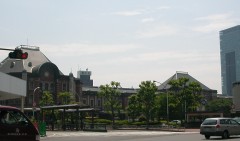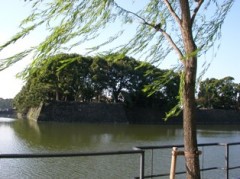13 June 2009
Became a free walking tour guide for Imperial Palace
Today, I have become a guide for free walking tour guide for Imperial Palace in Tokyo.
Though I am not a professional guide but I speak English so I joined the volunteer activity.
It was nice. Today I and other two guides started the tour from Tokyo Station.
There were 10 people gathered at the exit. They were from Canada, Australia, Sweden and North Carolina (U.S.A).
After explaining to them history and current renovation plan of Tokyo Station, we took them to Tokyo's most famous tourist spot, Imperial Palace.
We explained to them how the castle was protected from invaders, such as surrounding mort, Stone Walls, Trap gate, and checkpoints.
We talked about middle age to modern time history of Japan as to how the country was developed into a unified nation.
It was sunny and hot day. They really seemed to enjoy the tour.
If you are living in Tokyo or have a chance to visit here, why don't you join the tour.
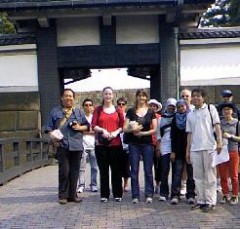
The tour is held every Saturday afternoon at 1PM. Gather at the Marunouchi central exit of Tokyo Station.
Straight-ahead is Imperial Palace.
See you there!!
22:16 Posted in Tokyo Life, Travel | Permalink | Comments (0) | Tags: tokyo, japan, history
29 March 2009
Enjoyed Bauhaus Arts
I went to the exhibition of Bauhaus art in Utsunomiya Museum of Art in Utsunomiya city, 1 and half hour train ride from Tokyo.

That was very amazing exhibition. I've learned so much about Bauhaus stuff buying books on Bauhaus history, arts, and architecture.
Bauhaus was established in 1919 in Weimar, Germany and was later relocated to Dessau and finally relocated in Berlin.
But in 1933, after Nazis took over authorities of the government, Bauhaus ended just as Weimar Republic did.
It was a symbol of modernism. The cocept was unification of art and technology. Respecting functionalism but being artistic.
There exhibited famous pipe and leather chair called "Wassily chair," which was designed to sit on comfortably. Desks, beds, lamps and other interior.
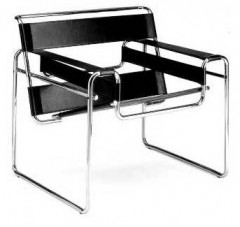
Beautiful drawings, which should have been very innovative in those days.
The reason why I am so interested in it is I am writing a short novel using history of this art school.
The title is "Bauhausler." A Japanese woman who came to Berlin to study modern art at Bauhaus school experienced turmoil between this innovative art and growing Nazism.
22:31 Posted in Culture, Deutschland, Japan News | Permalink | Comments (0) | Tags: history
26 March 2009
Film: Walküre (Valkyrie)
I went to see Tom Cruise's movie "Valkyrie." The film of actual event which took place in Germany during World War II.
German military officer, Colonel Stauffenberg tried to assassin German dictator, Adolf Hitler to remove Nazi Party from power and bring peace in Europe. The consequence was he failed and was executed.
I've seen German film of the story before. Then I went to Berlin and saw the memorial of his execution.

00:14 Posted in Deutschland, Film | Permalink | Comments (0) | Tags: history, nazis
09 March 2009
Short Novel: "Bauhausler" Introduction
A new novel after 4 American Hostages in Baghdad
A story of Japanese woman who experienced Bauhaus art and love romance in Berlin, early 1930's when Nazis came to power.
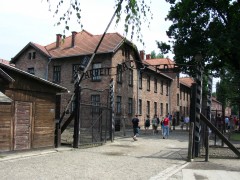
Auschwitz Museum in Oswiecim, Poland November 2009
"Ladies and Gentleman. Thank you for gathering today. We are here to honor the biggest contributor to this museum in our history. Late Madam Masako Chikano."
A man spoke in Polish and English in front of tens of people, mostly journalists gathered in the conference room. The speaker was the head of the museum. Auschwitz-Birkenau, The World Heritage, death camp built by Nazi-Germany.
Late Madam Masako Chikano was called "Hotel Queen". She died of natural causes last month. She was 98 years old when she died. She established one of world's most biggest hotel chain, Chikano Hotels, which have franchises in most of major cities in Japan and the rest of the world. The chain ranges from high-class to cheap business purpose only style. But all the hotels she owned had one thing in common, every room, lobby, and some of the corridors placed interesting pipe chairs, usually called Wassily Chair. It is one of most symbolic Bauhaus furniture.

Some of the hotel buildings were designed in the way of Bauhaus concept. Modern, functional, minimumal ways.
It was one of the mysteries of the hotel queen, why she liked Bauhaus style. She was very mysterious woman.
Other mysteries are,
Although she had been known as most energetic business woman in Japan until her retired age 80, she had been single for her life. She dedicated her life to hotel business, but she was actually very beautiful woman that could attract any man. Indeed she was once married when she was 20 to 21. But she never was remarried after the divorce of first marriage.
The will she left said that she wanted to donate all her fortune to the Auschwitz Museum. That may be a biggest mystery of her. What made her want to do such thing?
The speaker held the will in his hand and said,
"To begin with, we have to talk about her connection between this museum and her early life experience. This is the part rarely known about her life. She never wanted to talk about that part in her life. But that was most important part in her life as mentioned in the will. Now let us unveil one of the most important mysteries of this woman."
Berlin, Germany, October, 1932
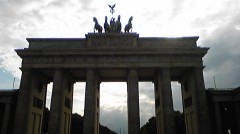
Masako Chikano arrived in Berlin. She came to capital of Germany, Deutcheland all the way from Yokohama, Japan. First by ship, almost 1 month travel to Marseille, France via Colombo, Ceylon (Sri Lanka) and then from Marseille to Berlin by train for a few days.
She was heart broken after the divorce. Because of the divorce just a year after marriage, she was treated as embarrasment of her family, Baron Chikano, a noble man who rooted from highest rank of samurai clan. Her father, Baron Kozo Chikano was a member of House of Lords and ran business of finance and military equipments. Her family belonged to elite class in Japan.
The reason that she got divorce was she had an affair with her husband, Yoshio's best friend Takeshi. Actually Yoshio regarded him as his sworn brother. Both of them belong to Japanese Imperial Navy. Her affair with Takeshi made him angry and kick her out. She could have been prosecuted of adultery but her husband did not because of her family's influence in the society and he did not want to prosecute his sworn brother either. After she came back to her home, her family had to kick her out because of biggest blunder in the family's history. She had dishonored her family's name. They had to hide her until the bad reputation would fade away. Her father ordered her to leave Japan for several years. She had to stay in foreign country where no one knew her.
She had good command of English and Germany since she learned those languages from childhood as part of upper class education. She chose to go to Berlin, Germany. She did not have specific reason to choose it. She just prefers learning modern art. She heard good reputation of German born modern art, Bauhaus.
Here she was in Berlin. She opened a door to her new life. She believed she could forget about all the mess.
Continued to Chapter 1.
This novel is copywrighted by this blog's manager, Masagata.
00:59 Posted in Deutschland, My novel | Permalink | Comments (0) | Tags: history, poland, nazis, gay, holocaust, literature






